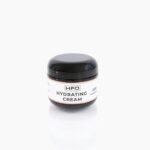Laser hair removal has become a popular choice for those seeking a long-term solution to unwanted hair. If you’ve ever found yourself frustrated with the constant upkeep of shaving or the discomfort of waxing, you might be considering this innovative method. The appeal lies in its promise of reduced hair growth over time, allowing you to enjoy smoother skin without the daily hassle.
As you delve into the world of laser hair removal, it’s essential to understand what it entails and how it can fit into your lifestyle. This method utilizes concentrated beams of light to target hair follicles, effectively disrupting their growth cycle.
It’s important to note that while many people experience significant hair reduction, results can vary based on individual factors such as hair color, skin type, and hormonal influences. By familiarizing yourself with the process and its benefits, you can make an informed decision about whether this treatment is right for you.
Key Takeaways
- Laser hair removal uses concentrated light to target and destroy hair follicles, resulting in long-term hair reduction.
- Before the procedure, it’s important to avoid sun exposure and certain hair removal methods to ensure the best results.
- During the procedure, you may feel a slight discomfort or warmth as the laser targets the hair follicles.
- Aftercare involves protecting the treated area from sun exposure and following any specific instructions from your provider.
- Potential risks and side effects of laser hair removal include skin irritation, redness, and changes in skin pigmentation.
How Laser Hair Removal Works
At the core of laser hair removal is the principle of selective photothermolysis. This scientific term refers to the process by which the laser targets specific pigments in the hair follicles while leaving the surrounding skin unharmed. When you undergo a session, the laser emits a pulse of light that is absorbed by the melanin in your hair.
This absorption generates heat, which damages the follicle and inhibits future hair growth.
The effectiveness of laser hair removal is influenced by several factors, including the contrast between your skin tone and hair color.
Darker hair on lighter skin tends to yield the best results because the laser can easily differentiate between the pigment in the hair and the surrounding skin. However, advancements in technology have led to the development of lasers that can treat a wider range of skin tones and hair colors. As you consider this option, it’s beneficial to consult with a professional who can assess your unique characteristics and recommend the most suitable approach for you.
Preparing for Laser Hair Removal

Preparation is key to ensuring a successful laser hair removal experience. Before your first appointment, you’ll want to schedule a consultation with a qualified provider. During this initial meeting, you can discuss your goals, medical history, and any concerns you may have.
It’s also an opportunity for your provider to evaluate your skin and hair type, which will help determine the best treatment plan tailored specifically for you. In the weeks leading up to your treatment, there are several important steps to take. You should avoid sun exposure and tanning beds, as tanned skin can increase the risk of complications during the procedure.
Additionally, refrain from waxing or plucking hairs in the treatment area for at least four weeks prior to your appointment; these methods can disrupt the hair growth cycle that laser treatment relies on. Instead, shaving is recommended as it allows the laser to effectively target the follicles without removing them entirely. By following these preparatory steps, you can enhance your chances of achieving optimal results.
What to Expect During the Procedure
| Procedure Step | Details |
|---|---|
| Preparation | Patient will be asked to change into a hospital gown and remove any jewelry or metal objects. |
| Anesthesia | Local or general anesthesia may be administered depending on the procedure. |
| Incision | A small incision will be made at the site of the procedure. |
| Procedure | The main surgical or medical procedure will be performed. |
| Closure | The incision will be closed with stitches or surgical tape. |
| Recovery | Patient will be monitored in a recovery area before being discharged. |
When you arrive for your laser hair removal session, you’ll likely find a calm and professional environment designed to put you at ease. Your provider will begin by explaining the procedure in detail and answering any last-minute questions you may have. To ensure your comfort during treatment, they may apply a topical anesthetic to minimize any potential discomfort from the laser pulses.
As the procedure begins, you’ll wear protective eyewear to shield your eyes from the bright light emitted by the laser. The provider will then use a handheld device to deliver targeted pulses to the treatment area. You may feel a sensation similar to a rubber band snapping against your skin with each pulse, but this discomfort is typically brief and manageable.
Depending on the size of the area being treated, sessions can last anywhere from a few minutes to over an hour. Knowing what to expect can help alleviate any anxiety you may have about the process.
Aftercare and Recovery
After your laser hair removal session, it’s essential to follow proper aftercare instructions to ensure optimal healing and results. Immediately following treatment, you may notice some redness or swelling in the treated area; this is a normal response and should subside within a few hours. Applying a soothing gel or ice pack can help alleviate any discomfort and reduce inflammation.
In the days following your procedure, it’s crucial to keep the treated area clean and moisturized. Avoid hot baths, saunas, or vigorous exercise for at least 24 hours post-treatment, as these activities can irritate your skin. Additionally, be sure to apply sunscreen if you plan on exposing the area to sunlight; protecting your skin from UV rays is vital for preventing pigmentation changes and ensuring a smooth recovery process.
By adhering to these aftercare guidelines, you can enhance your results and promote healthy skin.
Potential Risks and Side Effects
Temporary Side Effects
Some individuals may experience temporary side effects, such as redness, swelling, or mild discomfort in the treated area. These symptoms typically resolve within a few hours or days, but can vary based on individual sensitivity and skin type.
Rare but Serious Side Effects
In rare cases, more serious side effects may occur, including blistering, scarring, or changes in skin pigmentation. These risks can be minimized by choosing an experienced provider who uses appropriate technology for your specific skin type.
Minimizing Risks and Making an Informed Decision
During your consultation, be sure to discuss any concerns you may have regarding potential side effects so that you can make an informed decision about proceeding with treatment.
Maintenance and Follow-Up Treatments
Achieving optimal results from laser hair removal often requires multiple sessions spaced several weeks apart. This is because hair grows in different cycles, and not all hairs are in the same growth phase at any given time. Your provider will develop a personalized treatment plan that outlines how many sessions you may need based on factors such as your hair density and growth rate.
After completing your initial series of treatments, some individuals may find that they require maintenance sessions every six months or annually to keep unwanted hair at bay. These follow-up treatments help address any remaining hairs that may have been missed during previous sessions or those that have entered a new growth phase since your last appointment. Staying consistent with maintenance treatments will ensure that you continue to enjoy smooth skin without the hassle of traditional hair removal methods.
Choosing the Right Provider for Laser Hair Removal
Selecting a qualified provider for your laser hair removal treatment is one of the most critical steps in ensuring a successful experience. Start by researching clinics in your area and reading reviews from previous clients; this will give you insight into their reputation and level of expertise. Look for providers who are licensed and certified in laser treatments, as this indicates they have undergone proper training.
During your consultation, take note of how comfortable you feel with the provider and their staff. A good provider will take the time to answer all your questions thoroughly and address any concerns you may have about the procedure. They should also conduct a thorough assessment of your skin and hair type before recommending a treatment plan tailored specifically for you.
By choosing a reputable provider who prioritizes patient care and safety, you can embark on your laser hair removal journey with confidence. In conclusion, laser hair removal offers an effective solution for those looking to reduce unwanted hair with minimal long-term maintenance. By understanding how it works, preparing adequately for treatments, and following proper aftercare protocols, you can achieve smooth skin while minimizing potential risks.
With careful consideration in choosing a qualified provider, you’ll be well on your way to enjoying all the benefits that this innovative method has to offer.
If you are interested in learning more about the fashion trends related to laser hair removal, check out this article on inlaserhairremoval.com. This article discusses how laser hair removal can be a game-changer in the fashion industry, allowing individuals to confidently wear the latest styles without worrying about unwanted hair. It also highlights the benefits of laser hair removal in achieving a sleek and polished look.
FAQs
What is laser hair removal?
Laser hair removal is a cosmetic procedure that uses a concentrated beam of light (laser) to remove unwanted hair. The laser targets the pigment in the hair follicles, damaging them and inhibiting future hair growth.
How does laser hair removal work?
During the procedure, the laser emits a light that is absorbed by the pigment in the hair follicles. This damages the follicles and inhibits future hair growth. Multiple sessions are usually required to achieve long-term hair reduction.
Is laser hair removal permanent?
Laser hair removal can lead to long-term hair reduction, but it is not always permanent. Some hair may grow back, but it is often finer and lighter in color. Maintenance sessions may be needed to sustain the results.
What areas of the body can be treated with laser hair removal?
Laser hair removal can be used to treat unwanted hair on various areas of the body, including the face, legs, arms, underarms, bikini line, and back.
Is laser hair removal safe?
When performed by a qualified and experienced professional, laser hair removal is generally considered safe. However, there are potential risks and side effects, such as skin irritation, redness, and changes in skin pigmentation.
Who is a good candidate for laser hair removal?
Laser hair removal is most effective for individuals with light skin and dark hair, as the laser targets the pigment in the hair follicles. It may not be as effective for individuals with light-colored or fine hair.
How many sessions are typically needed for laser hair removal?
The number of sessions needed for laser hair removal varies depending on the individual’s hair type, skin color, and the area being treated. On average, multiple sessions spaced several weeks apart are required to achieve optimal results.







